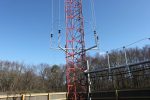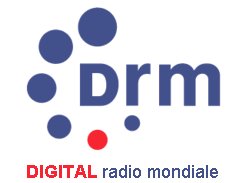After reading this article in Radio World it seems the all-digital AM testing completed last December was “nearly flawless.” This comes as no surprise considering that WBCN is owned by CBS, also an iBiquity investor. Could there really be another result? I think not. But let us examine the technical aspects of the WBCN test itself.
WBCN is on 1,660 KHz in the expanded part of the AM band. According to the FCC database, it transmits from a single 90.7 degree tower. As such, the tower is likely either broad-banded already or easily modified to be. Also according to the FCC database, there are eight other stations licensed to 1,660 KHz, all of which transmit with a power of 1 KW at night. This eliminates much of the interference issues found on the rest of the AM band. It can be further noted, the problem with electrical noise is most prevalent below 1,000 KHz. There is little wonder in the nearly flawless results.
From a technical standpoint, this is about as favorable a testing configuration as can be conceived for AM IBOC. If AM HD radio did not work under these test conditions, then it would never work at all. The actual data from the tests has yet to see the light of day and it may never be released. This is likely due to the same reason the NAB will not release its technical improvement study on AM; we simply won’t understand it.
Near the end of the article, someone (it is not exactly clear who) asks the NAB, “Why the opacity?” For which the answer given is “to get stuff done.” There is a fair bit of hubris in that statement. Is the NAB now the technology decider for the rest of us? I think not. Shutting out everyone but a very select few rightly causes suspicion, something that the Radio World article acknowledges.
Accurate, real-world testing involves more than using one technically favorable test subject. In fact, the tests should be run in the most technically challenged environment to present meaningful data points in real-world conditions. Stations like a six-tower directional on 580 KHz, a 190-degree tower with a folded unipole on 810 KHz, or pretty much any class C AM station at night time. These types of tests will represent at least a few of the existing antenna systems and stations. Will that happen? It depends on whether the FCC will hold somebody’s feet to the fire and demand meaningful testing.
Much ink has already been spilled by various trade publications debating the future of AM broadcasting. Most take the position that there are several technical issues that make AM broadcasting problematic if not downright untenable. There are indeed some technical issues with AM when compared with FM or IP-based audio distribution. There are also several ways that AM broadcasting is superior to both FM and IP-based audio distribution. The truth is that AM broadcasting’s issues are complex and involve technical, regulatory, and operational considerations.
These can be broken down as follows:
- AM is prone to electrical noise interference
- AM is prone to co-channel and adjacent channel interference
- AM has inferior bandwidth and thus the audio quality
- AM has poor signal quality
- AM has a low or no market share
All of these problems conspire to make AM broadcasting unprofitable, or so the narrative goes. Does all-digital AM HD radio really solve any of these problems? From the WBCN test alone, the results are inconclusive.
Transmitting a signal in digital format does not make it immune to noise or interference. It simply masks the interference until the noise floor becomes too high causing excessive bit errors, at which time the receiver mutes. Thus, with AM HD radio in a noisy environment, the listener will not hear static, that much is true, they may not hear anything at all. Is this all-or-nothing reception an improvement?
AM broadcasting audio bandwidth problems are mostly self-inflicted. AM stations created loudness wars in the 60s and 70s, causing splatter and adjacent channel interference on older, cheap diode detector-type receivers. Receiver manufacturers responded by limiting IF bandwidths to 3-4 KHz, slightly better than telephone quality. The industry came up with the NRSC-1 standard which limited AM bandwidth to 10 KHz or less. For a long while, AM radio receivers remained very poor. This appears to be changing with newer receivers that are both more selective and more sensitive. My Toyota has a Pioneer radio which has good bandwidth on AM. Is it as good as FM? No, but it is certainly listenable, especially if no other station is playing that style of music.
That brings me to programming, which is the real crux of the issue. Continued in part II.





“Is this all or nothing reception an improvement?”
No. It’s one of the things that sucks about over the air digital TV. We don’t need it on yet another band.
I also can’t imagine the masses rushing out to buy new radios because every AM station is going to all digital. Even with the DTV transition, there were adapters that converted the digital signal to be usable on a personal analog television. I highly doubt this will be the case for AM. This not only leaves people like the elderly, who depend on their local AM news station for local information, in the dark but imagine all the late model automobiles that will lose AM radio reception.
To me, it smell of nothing more than collusion between the NAB, the big radio conglomerates and iBiquity for the all mighty buck! Do you think the surviving mom ‘n’ pop AM’s are going to license that garbage? I doubt it ’cause they’re either too poor or too smart!
Your best listeners are the ones that like you enough to listen through the noise and fading. I am sorry, but digital radio on AM sounds like crappy mp3 like audio, it is all garbled and distorted. Change over to all digital and I will simply stop listening! Before I would do that, it would be more logical to switch to narrow band FM on the am band. Where I live, I get adjacent channel interference from KMOX on 1120 and 1130, it is a fading noise. You can’t have stations broadcasting in digital in the daytime and then switch to analog at night, it makes the medium not viable.
A much more logical alternative would be to allocate the dead low TV band (2-6) for additional FM channels that would re-broadcast the AM stations and also allow for unlicensed broadcasting on a designated band. My solution for AM radio is to allocate a UHF analog TV channel and re-transmit the entire AM band from that market on UHF so that cell phone devices can pick them up. It would simply be an up-converted AM band that mirrors the receiving tower.
If we re-allocated (again) we could increase the day and night frequency response, leaving a channel buffer between AM stations.
Better radio receivers are what we need. The chinese already make portable shortwave receivers with DSP built in to remove noise. I use a Sony XDR-3HD, (with modified line out) which has an HD radio tuner. I am able to receive one radio station in HD radio, which is WTMJ from Milwaukee. But that is one of the strongest stations in the midwest. I sometimes pick up KMOX, but that is inconsistent. WTMJ sounded great before they went to Digital, but now the filtering ruins it, and the noise, the HD radio portion actually makes the analog worse.
I call that a con game. You degrade the quality of the analog signal by adding noise and filtering, and then claim the digital sounds better. I have tapes of WTMJ radio when it was AM Stereo in the 90’s, and it sounded great. (I used a GM car radio as an am stereo tuner)
My Sony XDR3-HD has noise reduction and some DSP that takes out impulse noise on AM.
I am developing an analog system for AM broadcast that will greatly reduce impulse noise, buzz and fading. We could have done this 50 years ago, it is not rocket science.
There are also other technologies that are analog-based that can improve the sound quality of AM radio. AM radio technology is still living in the 1950’s. Just dumping it and going to Digital is not a solution, it is the demise of the medium.
HDTV looks wonderful….when it works….but how often, even on an antenna system designed by a radio engineer…do you see stuttering, drops and complete loss of program. I have yet to get through a big bowl game in February without at least one drop or lost play due to reception problems. Good grounding helps, but do you expect the average joe to install an antenna system, or are they using a set of rabbit ears. When it works, HDTV does not have noise and lines. But then again, in Milwaukee they have 1000 KW transmitters! If you can’t pick that up, your tuner is shorted! And while that is wide band (the FM equivalent of 100 KW) that is alot of electric power to broadcast TV.
How is Digital AM in any way an advantage. Use FM. Use some of the other massive dead space we have.
I grew up listening to WBCN 104.1 FM, “The Rock of Boston”. Corporate radio killed it. Sad to see those call letters relegated to another crappy conservative talk radio echo chamber.
Also, any digital radio standard should be built on open standards, not proprietary patent- and license-fee-encumbered technology. Personally, I nominate Ogg Vorbis as the codec. I’ve experimented with encoding CD audio at bit rates as low as 40 kB/s and couldn’t believe how good it sounded.
Also, I’ve noticed horrible ringing artifacts in the upper midrange on San Francisco Bay Area radio stations that have gone IBOC (KFOG, KSAN). I’m talking about the analog signal; I don’t own an HD radio. It’s very noticeable in electric guitar solos. Coincidence?
Fuck you Paul. You have no idea what you’re talking about. You weren’t there.
Hahaha, Bill. What a character you are!